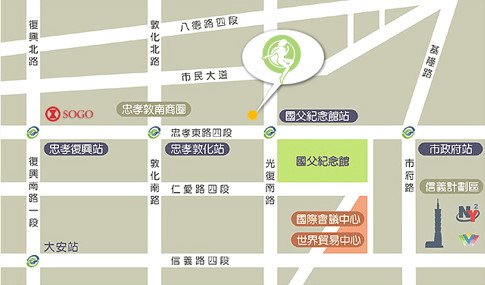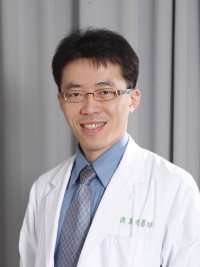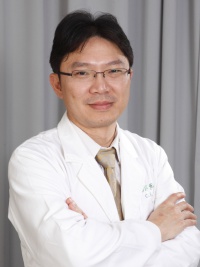|
|
| 行 67: |
行 67: |
| | | | |
| | | | |
| − | {{漸層水平線}} | + | {{陰影向下分隔線}} |
| | {{ | | {{ |
| | 區塊3-9 | | | 區塊3-9 | |
| 行 73: |
行 73: |
| | | | | | |
| | 圖片欄= | | 圖片欄= |
| | + | |
| | | | | | |
| | 文字欄= | | 文字欄= |
| − | ===參考施術流程=== | + | ==參考施術流程== |
| | + | <div class="container"> |
| | + | <div class="row"> |
| | <div class="col-md-3"> | | <div class="col-md-3"> |
| − | <div class=" img-caption">[[Image: Hyaluronic Acid Injection Step 1.jpg |class=img-responsive|175px]]</div>
| + | [[Image: Hyaluronic Acid Injection Step 1.jpg |class=img-caption img-responsive|175px]] |
| − | </div>
| + | 受術者與施術人員討論並觀察需要進行導入的部位。 |
| − | <div class="col-md-9">
| |
| − | 受術者與醫師討論並觀察需要進行手術的部位。
| |
| | </div> | | </div> |
| | | | |
| | <div class="col-md-3"> | | <div class="col-md-3"> |
| − | <div class=" img-caption">[[Image: Hyaluronic Acid Injection Step 2.jpg |class=img-responsive|175px]]</div>
| + | [[Image: Hyaluronic Acid Injection Step 2.jpg |class=img-caption img-responsive|175px]] |
| − | </div>
| + | 施術人員標記需要導入的部位。 |
| − | <div class="col-md-9">
| |
| | </div> | | </div> |
| | | | |
| | <div class="col-md-3"> | | <div class="col-md-3"> |
| − | <div class=" img-caption">[[Image: Hyaluronic Acid Injection Step 3.jpg |class=img-responsive|175px]]</div>
| + | [[Image: Hyaluronic Acid Injection Step 3.jpg |class=img-caption img-responsive|175px]] |
| | + | 施術人員開始導入玻尿酸。 |
| | </div> | | </div> |
| − | <div class="col-md-9">
| |
| | </div> | | </div> |
| − | }}
| |
| − | {{陰影向下分隔線}}
| |
| − |
| |
| − |
| |
| − | {{
| |
| − | 區塊 |
| |
| − | 標題欄=
| |
| − | ==玻尿酸==
| |
| − | |
| |
| − | 文字欄=
| |
| − | 玻尿酸,學術名稱稱之為透明質酸 ( Hyaluronic acid,HA ),化學表達命名為聚醣醛酸。
| |
| − |
| |
| − | 1930年代在牛眼球中的晶狀體被萃取出來並被賦予名稱
| |
| − | <ref>
| |
| − | Meyer K, Hobby GL, Chaffee E, Dawson MH (January 1940). <br/>
| |
| − | "THE HYDROLYSIS OF HYALURONIC ACID BY BACTERIAL ENZYMES".<br/>
| |
| − | J Exp Med 71 (2): 137–46.<br/>
| |
| − | PMID [http://www.ncbi.nlm.nih.gov/pubmed/19870951 19870951].
| |
| − | </ref>
| |
| − | ,其學名 Hyalur 為希臘文,代表水晶之意,Uronic Acid 則是其化學式醣醛酸。
| |
| − |
| |
| − | 會與[[尿酸]]混淆是早期的翻譯錯誤,是因為尿酸 ( Uric Acid ) 與醣醛酸 ( Uronic Acid ) 英文相近導致,玻尿酸本身與尿酸沒有任何關係,生物活性與生化反應扮演的角色也非常不同。
| |
| − |
| |
| − | 玻尿酸在常溫狀態下,與水混合之後會呈現如同凝膠的狀態,玻尿酸的大型高分子聚合物具有很強的親水性,可以涵養超過其分子體積500倍的水分,作為[[美容醫學]]注射的填充物提供支撐力,可以做為修補凹陷和去除[[皺紋]]之用。
| |
| − |
| |
| − | 一個體重70公斤的成年人,體內的玻尿酸總和大約為15公克,其中三分之一會被身體每天代謝並更換。
| |
| − | <ref>
| |
| − | Stern R (August 2004).
| |
| − | "Hyaluronan catabolism: a new metabolic pathway". <br/>
| |
| − | Eur J Cell Biol 83 (7): 317–25. <br/>
| |
| − | PMID [http://www.ncbi.nlm.nih.gov/pubmed/15503855 15503855].
| |
| − | </ref>
| |
| − | 在人體中玻尿酸的聚合物是[[細胞基質]]的主要成分之一,主要集中於[[關節]]、[[神經元]]以及皮膚的[[結締組織]]中。
| |
| − | |
| |
| − | 圖片欄=
| |
| − | <div class=" img-caption">[[Image: Hyaluronic Acid.jpg |class=img-responsive|thumb|360px]]玻尿酸在常溫下與水混合的凝膠,後方是玻尿酸粉末</div>
| |
| − | |
| |
| − | }}
| |
| − |
| |
| − |
| |
| − |
| |
| − | {{漸層水平線}}
| |
| − | {{
| |
| − | 區塊 |
| |
| − | 標題欄=
| |
| − | ===玻尿酸的生化反應進程===
| |
| − | |
| |
| − | 文字欄=
| |
| − | 玻尿酸在生物體具有特殊的活性
| |
| − | <ref>
| |
| − | [http://web.archive.org/web/20080528102159/http://www.biomateria.com/bio_skin_3.htm Bio-skin FAQ]
| |
| − | </ref>
| |
| − | ,除了作為細胞基質的成分之外,亦參與許多不同的生化反應,玻尿酸分子會與人體細胞外層的細胞膜上的[[CD44]]受體結合驅動之下,
| |
| − | <ref>
| |
| − | Wayne D. Comper, Extracellular Matrix Volume 2 Molecular Components and Interactions, 1996, Harwood Academic Publishers
| |
| − | </ref>
| |
| − | 在細胞組織[[發炎反應]]的初期階段扮演重要的角色。
| |
| − | <ref>
| |
| − | Wisniewski H. G., et al., The Journal of Immunology, 1996, 156: 1609–1615
| |
| − | </ref>
| |
| − |
| |
| − | 發炎反應並不是完全負面狀況,實際上發炎反應其實是組織修護與再生中很重要的一環。
| |
| − | <ref>
| |
| − | Martin P, Leibovich S. Inflammatory cells during wound repair: the good, the bad and the ugly.. Trends Cell Biol. 2005, 15 (11): 599–607. <br/>
| |
| − | PMID [http://www.ncbi.nlm.nih.gov/pubmed/16202600?dopt=Abstract 16202600].
| |
| − | </ref>
| |
| − | 過程中,體液逐漸浸入集中於反應發生的組織,造成該組織的細胞團塊開始游離
| |
| − | <ref>
| |
| − | Kennndy J. F., et al., HA, Volume 2 Biomedical, Medical and Clinical Aspects, 2002, Woodhead Publishing Limited.
| |
| − | </ref>
| |
| − | ,老舊或破損的細胞在這遊離的過程之中,細胞膜的受體會與組織液的蛋白質結合,啟動[[細胞自戕]]機制而破裂,最後被巨噬細胞代謝。
| |
| − |
| |
| − | 凋亡的細胞會釋放出特定的[[細胞因子]]使附近的組織[[幹細胞]]團活性提高,開始分裂出新的細胞,生長並更新組織。此時組織附近血液的[[生長因子]]濃度提高,膠原蛋白纖維開始集中,構築細胞可以攀附生長的骨架。
| |
| − | <ref>
| |
| − | Cotran; Kumar, Collins (1998). Robbins Pathologic Basis of Disease. Philadelphia: W.B Saunders Company. ISBN 0-7216-7335-X
| |
| − | </ref>
| |
| − |
| |
| − | 圖中顯示玻尿酸注射之後皮膚組織切片的顯微照片,白色透明的大型顆粒為玻尿酸,紫色斑點為細胞核。
| |
| − |
| |
| − | 可以見到玻尿酸顆粒與細胞親合的密集度較高,細胞與玻尿酸顆粒之間的間隙比較小。
| |
| − | |
| |
| − | 圖片欄=
| |
| − | <div class=" img-caption">[[Image: Hyaluronic Acid in skin tissue.jpg |class=img-responsive|thumb|360px]]玻尿酸顆粒在組織中的顯微照片
| |
| − | <ref>
| |
| − | [http://www.aaomp.org/atlas/pgs/hyaluronic-acid.php Atlas of Foreign Materials: Hyaluronic Acid]
| |
| − | </ref></div>
| |
| − | }}
| |
| − |
| |
| − |
| |
| − |
| |
| − | {{漸層水平線}}
| |
| − | {{
| |
| − | 區塊
| |
| − | | 標題欄=
| |
| − | ===玻尿酸的理療程序===
| |
| − | | 文字欄=
| |
| − | 以皮下導入來說,導入玻尿酸之後,該部位會發生輕微的發炎反應,發炎反應發生後期階段,組織開始更新
| |
| − | <ref>
| |
| − | Toth, M. J. (29 December 2004). <br/>
| |
| − | "Age-related differences in skeletal muscle protein synthesis: relation to markers of immune activation". <br/>
| |
| − | AJP: Endocrinology and Metabolism 288 (5): E883–E891. <br/>
| |
| − | doi: [http://dx.doi.org/10.1152%2Fajpendo.00353.2004 10.1152/ajpendo.00353.2004].
| |
| − | PMID [http://www.ncbi.nlm.nih.gov/pubmed/15613683 15613683].
| |
| − | </ref>
| |
| − | ,而玻尿酸高分子作為細胞生長的基礎,為新細胞提供可以附著生長的空間。
| |
| − | <ref>
| |
| − | Potter, Hugh. [http://faculty.ucc.edu/biology-potter/connective_tissues.htm "The Connective Tissues"]. Retrieved 9 December 2012.
| |
| − | </ref>
| |
| − | <ref>
| |
| − | Caceci, Thomas. [http://www.vetmed.vt.edu/education/curriculum/vm8054/labs/lab5/lab5.htm "Connective Tisues"]. Retrieved 9 December 2012.
| |
| − | </ref>
| |
| − |
| |
| − | 另外比較有趣的是,玻尿酸雖然會促進發炎反應的發生,但是卻也同時扮演緩和發炎反應的角色
| |
| − | <ref>
| |
| − | Tammi R., et al., Journal of Investigative Dermatology, 1988, 90: 412–414
| |
| − | </ref>
| |
| − | ,隨著[[玻尿酸]]開始連結[[膠原蛋白]]和其他[[細胞基質]]分子,玻尿酸將會促使炎性組織的安定化,幫助其生長,最終緩解發炎反應。
| |
| − | <ref>
| |
| − | Foschi D., et al., International Journal on Tissue Reaction, 1990, 12: 333–339
| |
| − | </ref>
| |
| − | ===在細胞遷移扮演的角色===
| |
| − | 玻尿酸的[[游離分子]]促使細胞遷移機制的發生
| |
| − | <ref>
| |
| − | W. Y. John Chen and Giovanni Abatangelo, Wound Repair and Regeneration, 1999, 7: 79–89
| |
| − | </ref>
| |
| − | ,主要原因是游離的玻尿酸分子會導致細胞基質化學分子[[降解]],促使細胞間隙加大,使得組織液進入細胞之間,促成[[細胞遷移]]的發生,這個步驟將會引發後續一連串的生化反應。
| |
| − | | 圖片欄=
| |
| − | <div class=" img-caption">[[Image: Hyaluronic Acid product sculptra in skin tissue.jpg |class=img-responsive|360px|thumb]]玻尿酸商品舒顏萃 Sculptra 注射之後組織顯微照片
| |
| − | <ref>
| |
| − | [http://www.aaomp.org/atlas/pgs/hyaluronic-acid.php Atlas of Foreign Materials: Hyaluronic Acid]
| |
| − | </ref></div>
| |
| − | }}
| |
| − |
| |
| − |
| |
| − | {{漸層水平線}}
| |
| − | {{
| |
| − | 區塊 |
| |
| − | 標題欄=
| |
| − | ===不同大小的玻尿酸分子用途===
| |
| − | |
| |
| − | 文字欄=
| |
| − | 不同分子量的玻尿酸分子所造成的生理反應也有所不同。
| |
| − | <ref>
| |
| − | 邱品齊,保養品真相大公開6:你所不知道的藥妝品—皮膚科醫師特選篇,大境文化出版事業有限公司,2010年3月。P. 27-28。
| |
| − | </ref>
| |
| − | 一般而言,分子量百萬以上的高分子玻尿酸,主要是當作高分子吸水保濕劑,因為分子鏈越高,可以含水的體積就越大,常作為保濕目的使用。
| |
| − | <ref>
| |
| − | Tesar, B. M.; Jiang, D.; Liang, J.; Palmer, S. M.; Noble, P. W.; Goldstein, D. R. (2006).<br/>
| |
| − | "The Role of Hyaluronan Degradation Products as Innate Alloimmune Agonists".<br/>
| |
| − | American Journal of Transplantation 6 (11): 2622–2635. <br/>
| |
| − | doi: [http://dx.doi.org/10.1111%2Fj.1600-6143.2006.01537.x 10.1111/j.1600-6143.2006.01537.x]. <br/>
| |
| − | PMID [http://www.ncbi.nlm.nih.gov/pubmed/17049055 17049055]
| |
| − | </ref>
| |
| − |
| |
| − | 數萬到幾十萬的分子量的玻尿酸,會跟皮膚或特定組織細胞膜上的受體結合,對老化的細胞組織有促進更新的效果。
| |
| − | <ref>
| |
| − | Matou-Nasri, S.; Gaffney, J.; Kumar, S.; Slevin, M. (2009).<br/>
| |
| − | "Oligosaccharides of hyaluronan induce angiogenesis through distinct CD44 and RHAMM-mediated signalling pathways involving Cdc2 and gamma-adducin". <br/>
| |
| − | International journal of oncology 35 (4): 761–773. <br/>
| |
| − | PMID [http://www.ncbi.nlm.nih.gov/pubmed/19724912 19724912].
| |
| − | </ref>
| |
| − |
| |
| − | 幾千到數萬分子量之間的玻尿酸,具有誘發免疫發炎反應和促使血管增生,以及促成傷口癒合的生化反應。
| |
| − | <ref>
| |
| − | Kaya G. et al., Genes & Development, 1997, 15: 996–1007
| |
| − | </ref>
| |
| − |
| |
| − |
| |
| − |
| |
| − | 圖中顯示為玻尿酸的基本單位分子,右方為D-葡萄糖醛酸,左方為N-乙醯葡糖胺,玻尿酸高分子透過兩端的氫氧基加成反應鏈結而成。
| |
| − | |
| |
| − | 圖片欄=
| |
| − | <div class=" img-caption">[[Image: Hyaluronic Acid mocule unit.jpg |class=img-responsive|360px|thumb]]玻尿酸分子的基本單位,數十個到數萬個玻尿酸分子聚合成為不同大小的高分子,有著不同的生化作用</div>
| |
| − | |
| |
| − | }}
| |
| − |
| |
| − |
| |
| − | {{漸層水平線}}
| |
| − | {{
| |
| − | 區塊 |
| |
| − | 標題欄=
| |
| − | ===玻尿酸的生產製造===
| |
| − | |
| |
| − | 文字欄=
| |
| − | 玻尿酸的主要生產方式主要來源分為以下數種。
| |
| − | <ref name="production">
| |
| − | [http://www.hindawi.com/journals/ijcc/2013/624967/ Production Methods for Hyaluronan]
| |
| − | </ref>
| |
| − |
| |
| − | 動物組織提煉的玻尿酸主要原料是雞冠和牛眼或者鯊魚魚翅等類似的動物組織
| |
| − | <ref>
| |
| − | E. U. Ignatova and A. N. Gurov, “Principles of extraction and purification of hyaluronic acid,” Khimiko-Farmatsevticheskii Zhurnal, vol. 24, no. 3, pp. 42–46, 1990.
| |
| − | </ref>
| |
| − | ,但是這種方法提取率極低,分離過程複雜且價格昂貴
| |
| − | <ref>
| |
| − | M. O'Regan, I. Martini, F. Crescenzi, C. De Luca, and M. Lansing, “Molecular mechanisms and genetics of hyaluronan biosynthesis,” International Journal of Biological Macromolecules, vol. 16, no. 6, pp. 283–286, 1994.
| |
| − | </ref>
| |
| − | ,另外由於來自動物組織,有受病毒或疾病汙染以及引發過敏反應的風險
| |
| − | <ref>
| |
| − | J. C. Thonard, S. A. Migliore, and R. Blustein, “Isolation of hyaluronic acid from broth cultures of Streptococci,” The Journal of Biological Chemistry, vol. 239, pp. 726–728, 1964.
| |
| − | </ref>
| |
| − | 。但是因為是來自於動物體,其生化活性較高,分子的網狀結構也比較完整,通常可以預期比較好的效果。
| |
| − | <ref>
| |
| − | G. Kogan, L. Šoltés, R. Stern, and P. Gemeiner, “Hyaluronic acid: a natural biopolymer with a broad range of biomedical and industrial applications,” Biotechnology Letters, vol. 29, no. 1, pp. 17–25, 2007
| |
| − | </ref>
| |
| − |
| |
| − | 微生物醱酵法的玻尿酸,則是利用以葡萄糖以及其他單醣作為碳源發酵液,加入鏈球菌
| |
| − | <ref>
| |
| − | F. E. Kendall, M. Heidelberger, and M. H. Dawson, “A serologically inactive polysaccharide elaborated by mocoid strains of group A hemolytic Streptococcus,” The Journal of Biological Chemistry, vol. 118, no. 1, pp. 61–69, 1937
| |
| − | </ref>
| |
| − | 、乳酸球菌類或者枯草桿菌培養生產,分子大小和生物活性相較於動物組織提煉小
| |
| − | <ref>
| |
| − | D. C. Armstrong, M. J. Cooney, and M. R. Johns, “Growth and amino acid requirements of hyaluronic-acid producing Streptococcus zooepidemicus,” Applied Microbiology and Biotechnology, vol. 47, no. 3, pp. 309–312, 1997.
| |
| − | </ref>
| |
| − | ,但是因為製程控制的因素,受到疾病和病毒汙染的機會較低,醫療等級的美容醫學材料大多數是以這種方式生產。
| |
| − | <ref name="production"/>
| |
| − |
| |
| − | 化學合成法則使用聚合反應,價格便宜可以大量生產。過程中使用多糖類聚合物,以不同工藝進行有機化合物的加成反應,製造成本相對較低,但是造成網狀的分子大小也較小,生物活性和親合度較低,潔淨度和純度也不高,且可能殘留的化學藥劑,所以用途僅侷限於工業原料使用。
| |
| − | |
| |
| − | 圖片欄=
| |
| − | <div class=" img-caption">[[Image: Hyaluronic Acid Production in Bacillus subtilis.jpg |class=img-responsive|360px|thumb]]使用枯草桿菌以微生物醱酵法製作玻尿酸的培養照片
| |
| − | A為生產玻尿酸的分支菌種RB161菌落,B則為一般枯草桿菌作為對照組。
| |
| − | 兩個菌落都是使用以葡萄糖為碳來源作為培養基。
| |
| − | <ref>
| |
| − | [http://aem.asm.org/content/71/7/3747/F3.expansion.html Hyaluronic Acid Production in Bacillus subtilis]
| |
| − | </ref>
| |
| | </div> | | </div> |
| − | |
| |
| − | }}
| |
| − |
| |
| − |
| |
| − | {{漸層水平線}}
| |
| − | {{
| |
| − | 區塊 |
| |
| − | 標題欄=
| |
| − | ===動物性與非動物性來源玻尿酸===
| |
| − | |
| |
| − | 文字欄=
| |
| − | 做為醫療用途的玻尿酸,被規範為'''非動物性'''來源的玻尿酸 ( NABHA, Non-Animal-Based Hyaluronic Acid ) 以及'''動物性'''來源玻尿酸兩種 NBFHA (Non-Bacterial-Fermented Hyaluronic Acid ),後者英文字面上之意思為非微生物發酵玻尿酸。
| |
| − |
| |
| − | 隨著今日生物科技的進步,醫療用的'''非動物性'''來源玻尿酸和""動物性""來源玻尿酸的效用差異已經減少。'''動物性'''來源玻尿酸生物活性反應品質較好,但是有受到病源體汙染之虞,而微生物發酵生產的玻尿酸雖然潔淨程度和純度較高,但是大分子的成熟產品卻較動物性的昂貴許多。
| |
| − |
| |
| − | 價格上因為製作過程複雜度不同,作為針劑的混合方式不同而有所差異。
| |
| − | |
| |
| − | 圖片欄=
| |
| − | <div class=" img-caption">[[Image: Hyaluronic Acid Ponder.jpg |class=img-responsive|360px|thumb]]玻尿酸在常溫下,未加工前的乾燥粉末</div>
| |
| − | |
| |
| − | }}
| |
| − |
| |
| − |
| |
| − | {{陰影向下分隔線}}
| |
| − | {{
| |
| − | 區塊 |
| |
| − | 標題欄=
| |
| − | ==延伸閱讀==
| |
| − | |
| |
| − | 文字欄=
| |
| − |
| |
| − | |
| |
| − | 圖片欄=
| |
| − | |
| |
| | }} | | }} |
| | | | |
| 行 362: |
行 102: |
| | 引用區塊 | | | 引用區塊 | |
| | 標題欄= | | 標題欄= |
| − | ==參考文獻== | + | ==引用來源== |
| | | | | | |
| | 文字欄= | | 文字欄= |
| 行 370: |
行 110: |
| | | | | | |
| | }} | | }} |
| − |
| |
| | | | |
| | | | |






 <a itemprop="url">
<a itemprop="url">


